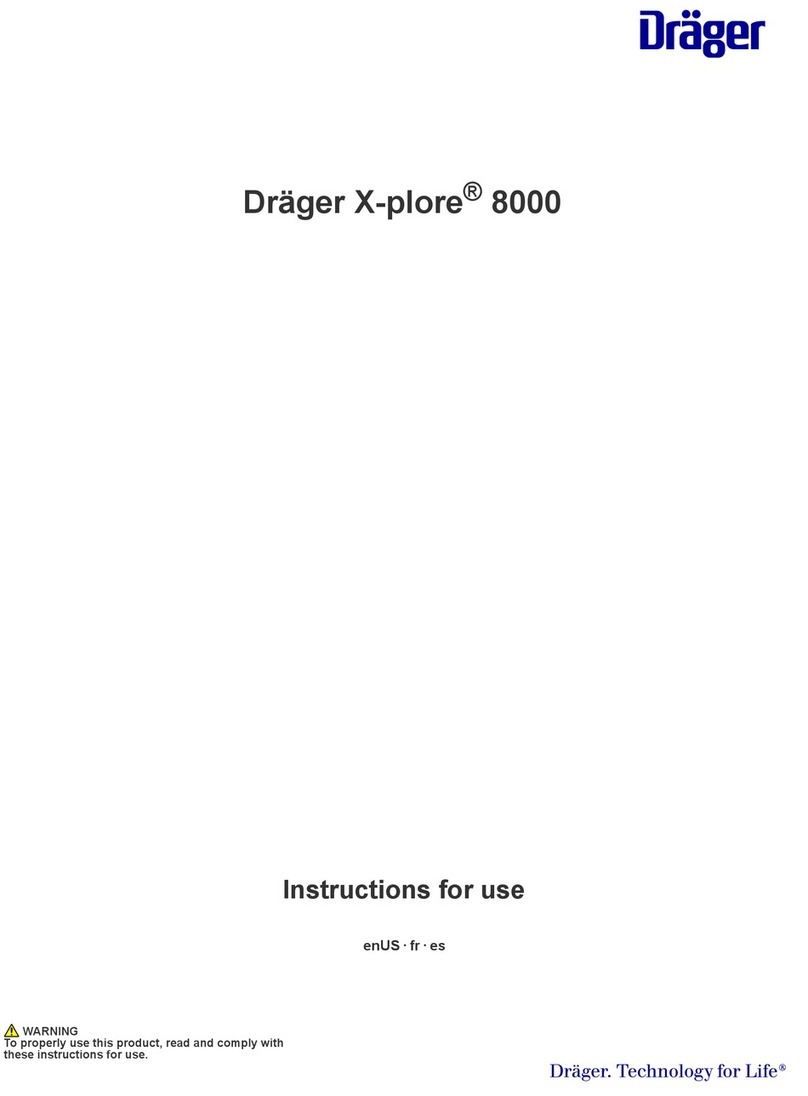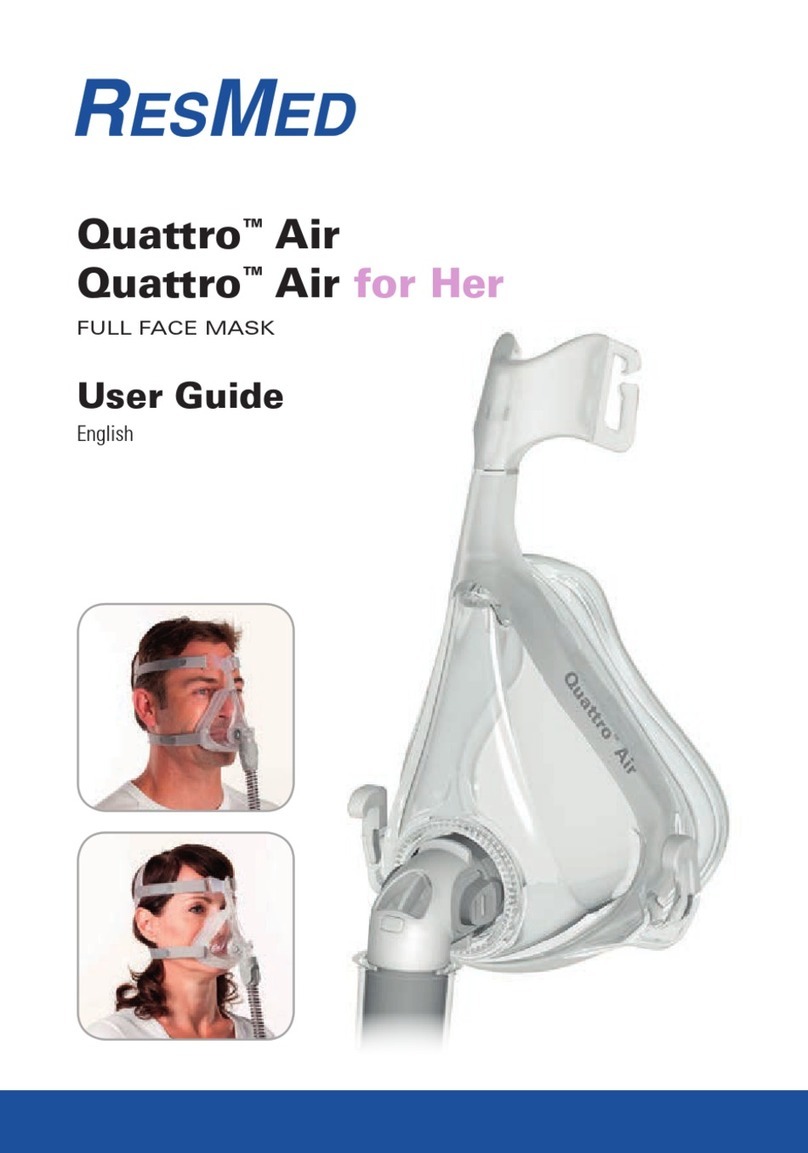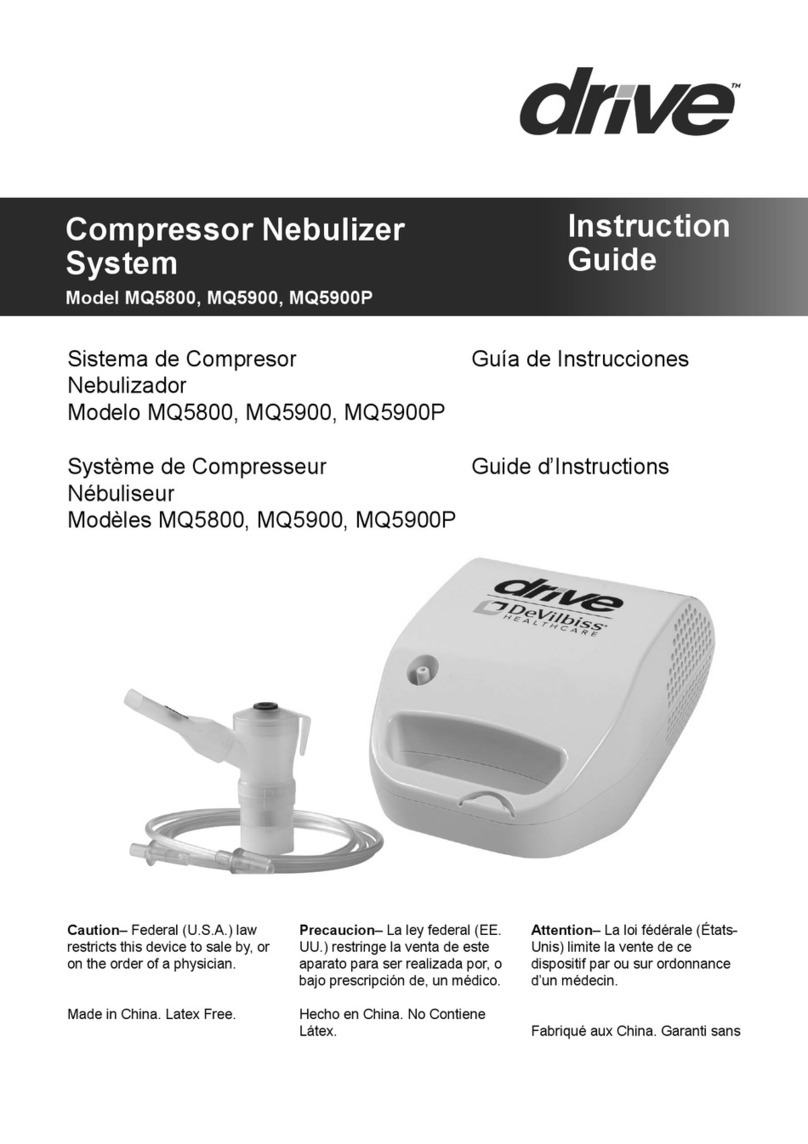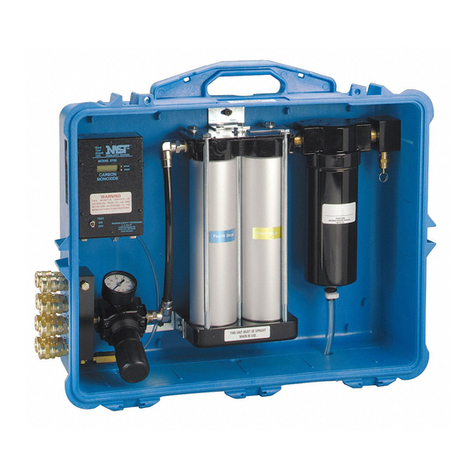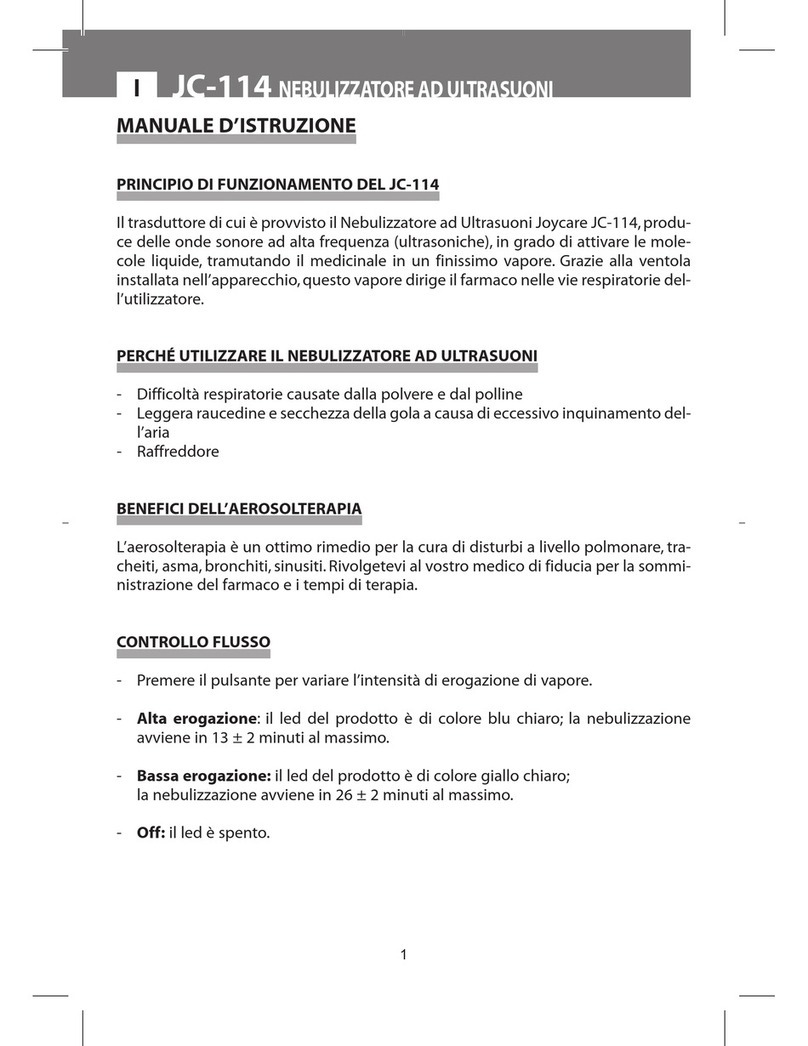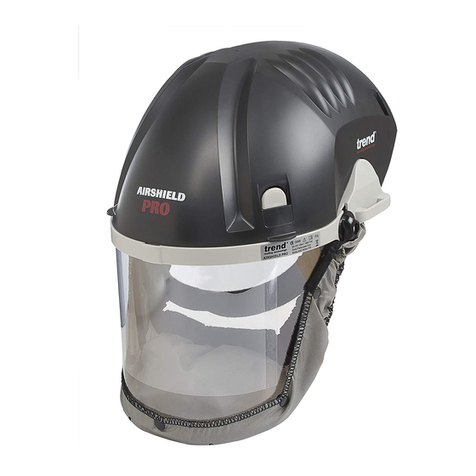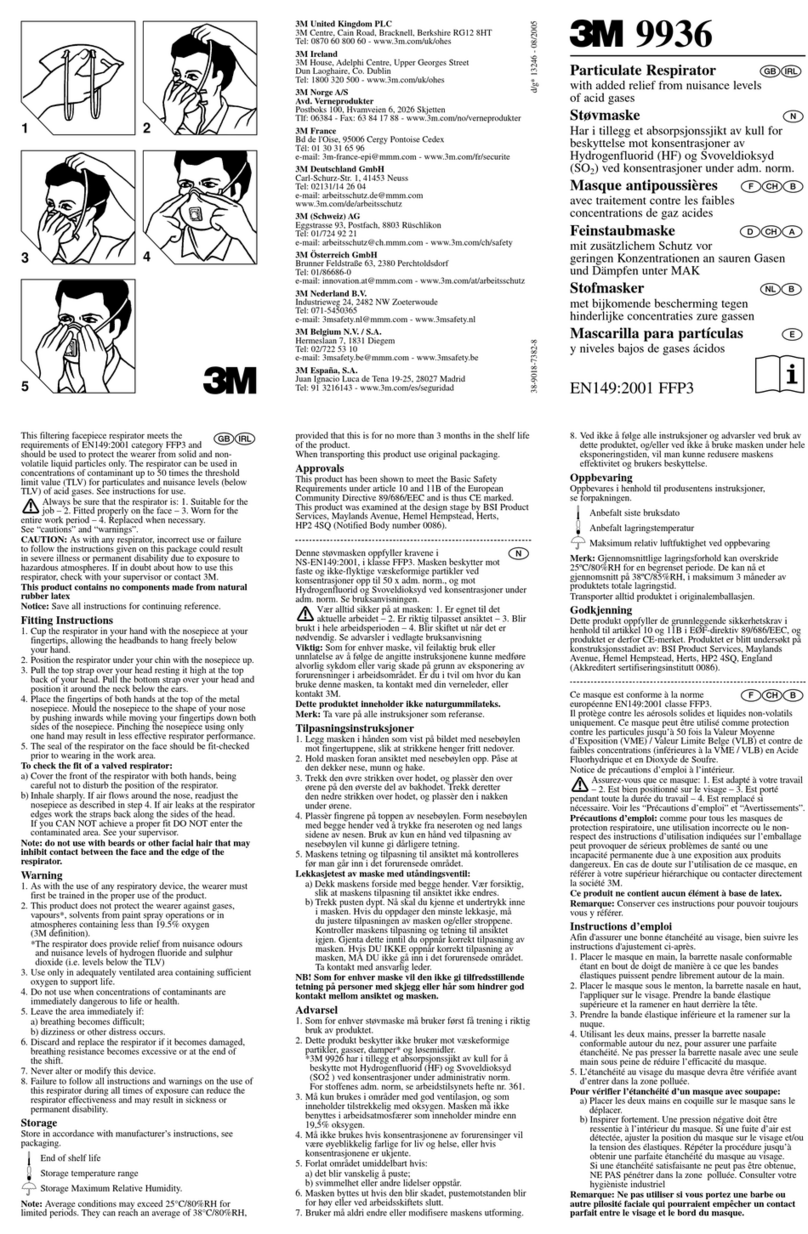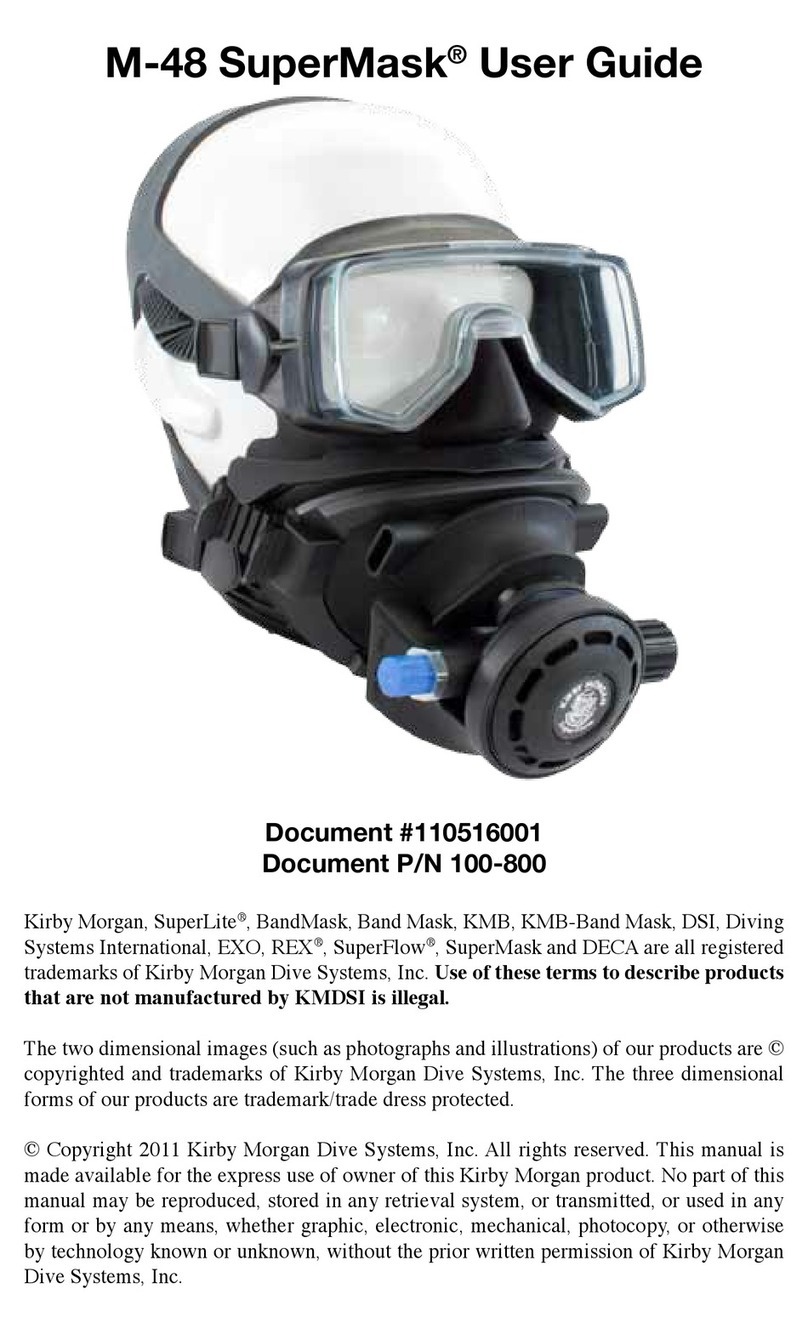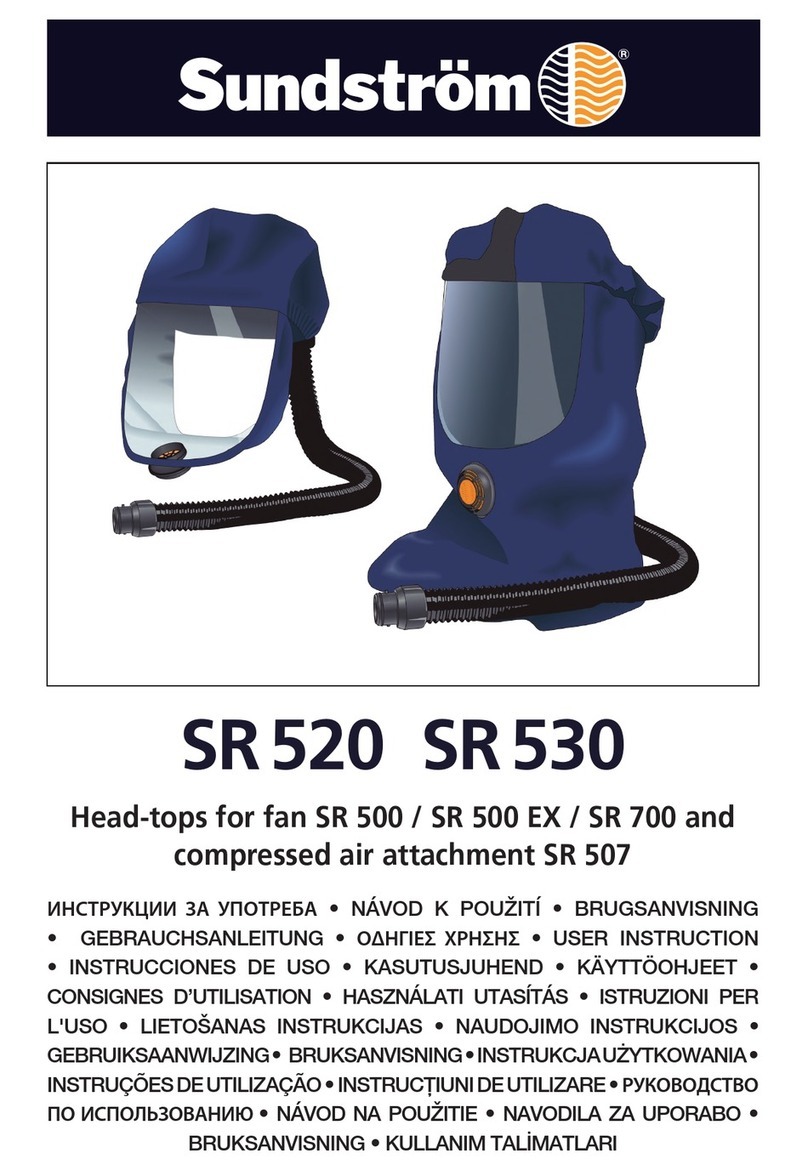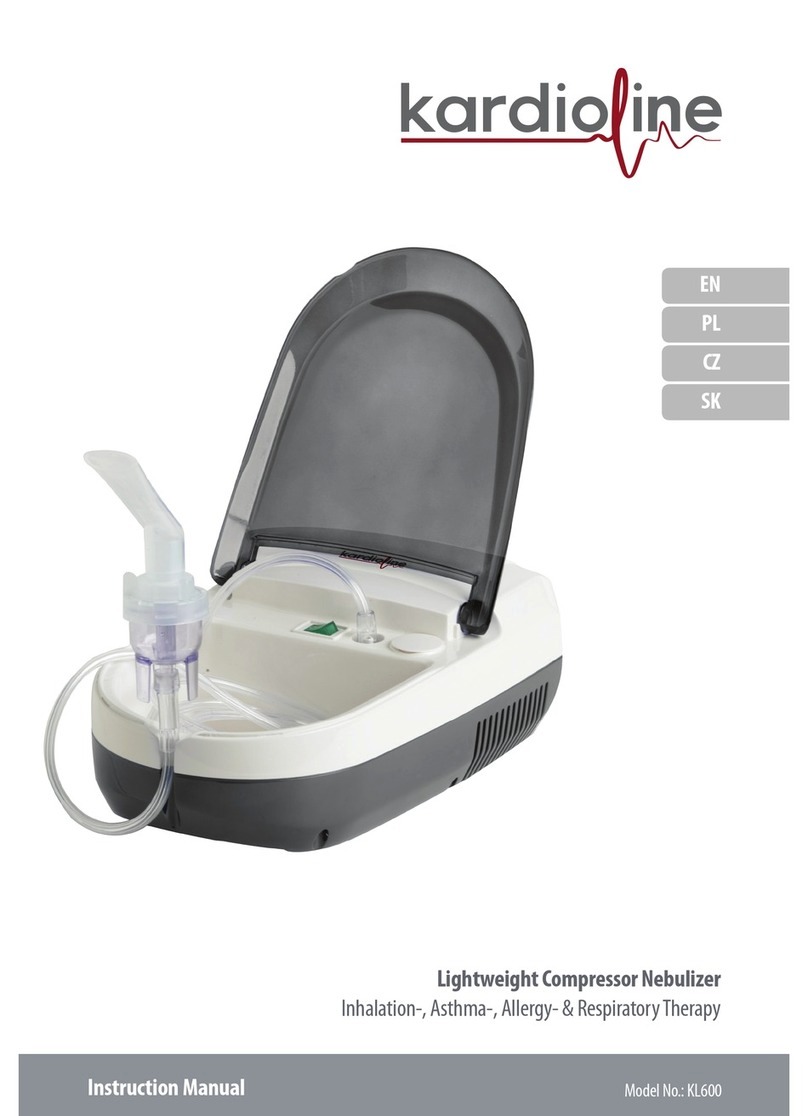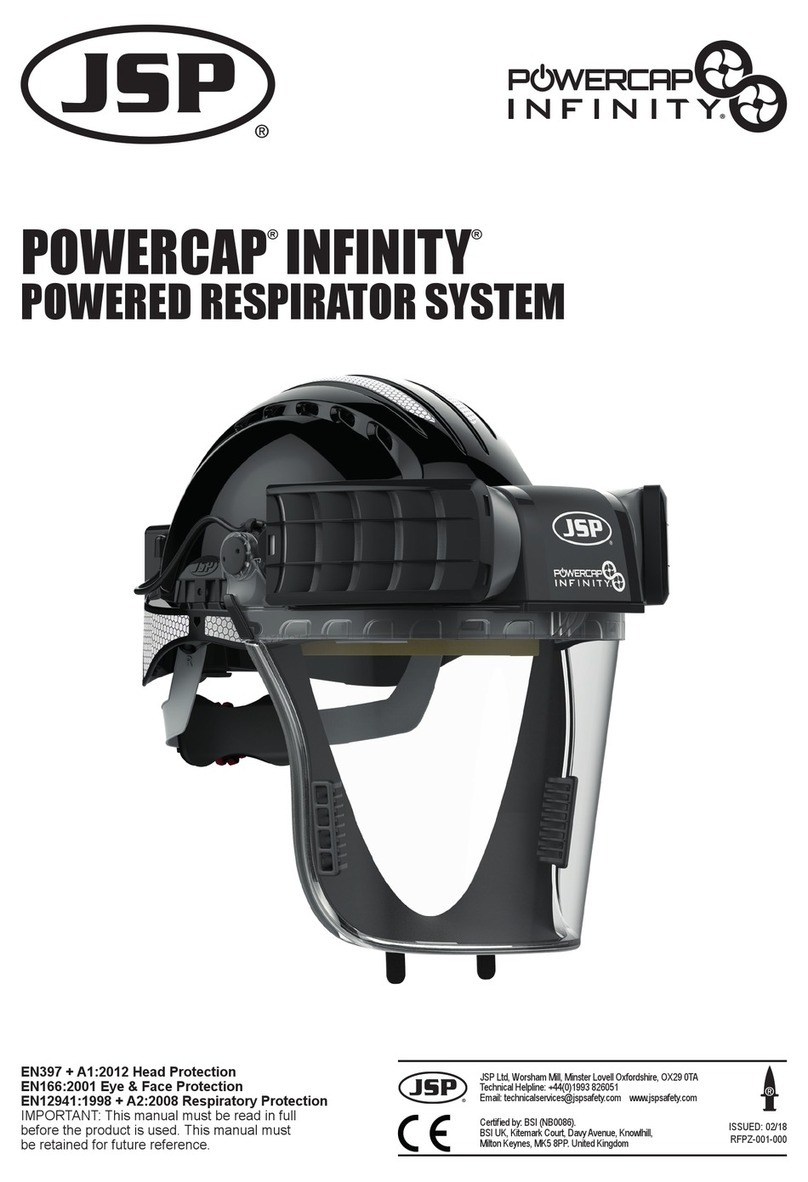Chlorine Tech Services CTS-IB-PPE-01 User manual

INSTRUCTION BOOKLET
(CTS-IB-PPE-01)
SELF-CONTAINED BREATHING
APPARATUS (SCBA)

SELF-CONTAINED BREATHING APPARATUS (CTS-IB-PPE-01)
©Chlorine Tech Services (Pty) Ltd –CIPC Reg # 2018/101848/07
Rev # 01/2020/10/15
P a g e | 2
TABLE OF CONTENTS
1. SAFETY REGULATIONS........................................................................................3
1.1. Correct Use......................................................................................................3
1.2. Liability Information........................................................................................3
2. THE SCBA ARRANGEMENTS...............................................................................3
2.1. Schematic ........................................................................................................3
2.2. Workings of the SCBA....................................................................................4
2.3. Air Consumption.............................................................................................5
2.4. Basic Unit –Backplate, pneumatic system without second connector ......5
2.5. Pressure Reducer............................................................................................6
2.6. The Demand Valve ..........................................................................................7
2.7. Medium Pressure Hose...................................................................................7
2.8. High Pressure Hose ........................................................................................8
3. USE.........................................................................................................................8
3.1. Mounting cylinder ...........................................................................................8
3.2. Connecting cylinder........................................................................................8
3.3. Donning (putting on) the SCBA......................................................................9
3.4. Doffing (taking off) the SCBA.......................................................................12
4. MAINTENANCE INSTRUCTIONS.........................................................................13
5. CLEANING............................................................................................................14
6. STORAGE.............................................................................................................14
7. TECHNICAL SPECIFICATIONS ...........................................................................14
8. ACKNOWLEDGEMENTS......................................................................................14
Read and understand the respective instructions for
use for each Device before using the equipment.

SELF-CONTAINED BREATHING APPARATUS (CTS-IB-PPE-01)
©Chlorine Tech Services (Pty) Ltd –CIPC Reg # 2018/101848/07
Rev # 01/2020/10/15
P a g e | 3
1. SAFETY REGULATIONS
1.1. Correct Use
This Self-contained Breathing Apparatus - referred to hereafter as SCBA - is self-
contained open-circuit compressed air apparatus operating independent of the
ambient air.
Breathable air according to EN 12021 is supplied to the user from a compressed air
cylinder via a pressure reducer, a lung governed demand valve and a full-face mask
(Refer to Instruction Booklet Full-Face Mask). The exhalation air is released directly
into the ambient atmosphere.
It is imperative that this instruction booklet be read and observed when using the
product. In particular, the safety instructions, as well as the information for the use
and operation of the product, must be carefully read and observed.
Furthermore, the applicable national regulations applicable in the user’s country
must be taken into account for safety use.
Alternative use, or use outside this specification will be considered as non-
compliance. This also applies especially to unauthorized alterations to the product
and to commissioning work that has not been carried out by authorized persons.ER
This product is supporting life and health. Inappropriate use, maintenance or
servicing may affect the function of the device and thereby seriously compromise
the user's life. Before use the product operability must be verified. The product must
not be used if the function test is unsuccessful, it is damaged, a competent
servicing/maintenance has not been made, or if genuine spare parts have not been
used.
1.2. Liability Information
Chlorine Tech Services accepts no liability in cases where the product has been
used inappropriately or not as intended. The selection and use of the product are
the exclusive responsibility of the individual operator. Product liability claims,
warranties also as guarantees made by the manufacturer with respect to the product
are voided, if it is not used, serviced or maintained in accordance with the
instructions in this instruction booklet.
2. THE SCBA ARRANGEMENTS
2.1. Schematic
The equipment consists of:
•A cylinder containing air under pressure
•A harness to mount the cylinders on the back of the person
•A respiratory system which has a means to reduce the pressure of air from the
cylinder and of supplying the wearer with air on demand
•A facemask attached to a demand valve which maintains a positive pressure
inside the mask at all times

SELF-CONTAINED BREATHING APPARATUS (CTS-IB-PPE-01)
©Chlorine Tech Services (Pty) Ltd –CIPC Reg # 2018/101848/07
Rev # 01/2020/10/15
P a g e | 4
2.2. Workings of the SCBA
2.2.1. The cylinders contain about 1240 litres of compressed air at 300 bar. This gives the
wearer around 30 minutes of air supply for full usage or about 20 minutes for working
conditions (person breathes heavily during work hence there is more consumption of air
and that is why the time is lesser).
2.2.2. The reducing valve reduces the pressure by about 4 bars which is further reduced by the
demand valve which is attached to the mask.
2.2.3. The demand valve is the one that supplies the air to the wearer when inhaling.
2.2.4. The exhalation valve releases the air from the facemask.
2.2.5. When the air left inside the apparatus will last about 10 minutes (50-55 bar pressure), a
warning whistle is sounded continuously till the cylinder gets emptied. The start of this
whistle is an indication for the wearer to move out of the space he’s in to fight fire or
whatever purpose it is used for.
2.2.6. The face mask is of soft moulded nature rubber and five adjustable head straps
and a neck strap. It has a foam filled or air cushion seal and a full vision visor.
For correct positioning of the mask, the straps should be tightened in the
sequence where the first two lower (chin) straps then the middle pair (cheek
straps) and finally the head strap is tightened. Care should be taken to not over
tighten them causing discomfort to the wearer. The mask is made of rubber and
plastic with a shatterproof visor. It has an exhalation port with a speech
diaphragm and a nose guard.
2.2.7. The wearer should have a good, clear field of vision through the visor.
2.2.8. A gauge is provided, clipped or attached to the harness that carries the cylinder
and it monitors the pressure within the cylinder. It is positioned to be visible to the
wearer.
2.2.9. Spare cylinders must be provided for each set of breathing apparatus.
2.2.10. In case that the facemask is dislodged in a toxic atmosphere, the wearer should
hold his breath and position the mask correctly. Any inlet of such toxic air can be
highly dangerous.
Fig. 1

SELF-CONTAINED BREATHING APPARATUS (CTS-IB-PPE-01)
©Chlorine Tech Services (Pty) Ltd –CIPC Reg # 2018/101848/07
Rev # 01/2020/10/15
P a g e | 5
2.3. Air Consumption
Approximate consumption by a person is as follows:
Degrees of work
Air consumption
(litres/minute)
Duration of cylinder in
minutes (1200 litres
capacity in minutes)
Duration of cylinder in
minutes (1800 litres
capacity in minutes)
Resting
8-12
150-100
225-150
Light Work
12-20
100-60
150-90
Moderate Work
20-40
60-30
90-45
Heavy Work
40-60
30-20
45-30
Nominal Working Duration =
(Fully Charge Cylinder Capacity) –10
40
We subtract 10 as 10 minutes is when the alarm starts ringing and it is a safe
period which must be taken into account. So, a 1200 litres cylinder will last for
1200/40 = 30 minutes minus the 10 = 20 minutes.
Nervousness and excitement can cause an increased demand of oxygen and a
proportionate increase of respiration rate.
2.4. Basic Unit –Backplate, pneumatic system without second connector
8
6
7
10
9
11
0
1
2
3
4
14
0
12
0
13
0
15
3
5
Fig. 2

SELF-CONTAINED BREATHING APPARATUS (CTS-IB-PPE-01)
©Chlorine Tech Services (Pty) Ltd –CIPC Reg # 2018/101848/07
Rev # 01/2020/10/15
P a g e | 6
Fig. 2 Basic Unit Parts
1. Back Plate
9. Tightening Straps
2. Shoulder Strap
10. Waist Belt
3. Cylinder Strap
11. Alarm Whistle
4. Cylinder Strap Buckle
12. Pressure Reducer Support
5. Medium Pressure Hose
13. Pressure Reducer
6. Demand Valve
14. Demand Valve Holder
7. High Pressue Hose
15. Chest Strap
8. Pressure Gauge
The basic breathing apparatus is made up of back plate, shoulder strap, reducer,
medium pressure hose, high pressure hose, pressure gauge and demand valve.
Back plate is designed to use symmetrical plastic handles for convenient movement
of device. Reducer is mounted under the back plate. Cylinder bracket is mounted in
the guide groove at the upper part of back plate. Lengths of waist belt and shoulder
strap can be adjusted. Material of the back plate is fibre reinforced material.
Materials of the shoulder strap and waist belt are flame-resistant polyester webbing,
flame-resistant fabric and flame-resistant padding material. Wide shoulder padding
and waist protective padding make the wearing very comfortable. The metal on the
back plate, straps and waist belt are made of stainless steel, are not easily rusted.
2.5. Pressure Reducer
1. High Pressure Hose
5. Cylinder Connector
2. Medium Pressure Hose
6. Alarm Whistle
3. O-ring
7. Safety Pressure Valve
4. Hand Wheel
WARNING
Once the air releasing phenomenon by the safety pressure release valve of the
reducer is noticed, withdraw from the working place immediately and stop using this
breathing apparatus. Send it to authorized service centres for inspection and repair.
It can only be used after all trouble removed. It’s forbidden to adjust any parts in the
reducer by user. The breathing apparatus must be sent back to an authorized
service centre for repair if any failure occurs. It is no allowed to disassemble the
reducer by the user. Don’t damage the seal surface when replacing the seal O ring
on the high-pressure connection.
Fig. 3

SELF-CONTAINED BREATHING APPARATUS (CTS-IB-PPE-01)
©Chlorine Tech Services (Pty) Ltd –CIPC Reg # 2018/101848/07
Rev # 01/2020/10/15
P a g e | 7
The reducer is mounted in the lower area of the back plate. It reduces pressure of
the high-pressure air from the cylinder to mid pressure at about 7 bar. The air is
delivered through medium pressure hose to demand valve, reduce the pressure
again and then used by the user. Turn the hand wheel and connect the cylinder
connector with the cylinder. Once the cylinder valve is opened, the user can view
the pressure indication from the pressure gauge as which is connected to the high-
pressure hose. A pressure alarm device is equipped in the reducer. When the
pressure of the cylinder is lowered to 55 ± 5 bar, it will give off audible alarm signal
≥ 90 dB. The alarm device will not be dependent on the ambient air when alarm
device gives an alarm, so the alarm device will not lose its function even if in high
humid atmosphere or under sprinkle water, or even in very low temperature. In
addition, the air consumed for the alarm device’s alarm is ≤ 5 L/min.
There is also a safety release valve, which is set to about 11 bar, in case there is
anything wrong and the medium pressure rises, the valve will be opened, release
the over pressure to guarantee the performance of the demand valve.
2.6. The Demand Valve
The demand valve is a lung governed demand valve for a compressed air breathing
apparatus. It is connected between compressed air supply and full-face mask and
controls the inhaled and exhaled air. The demand is not an independent breathing
apparatus. It must be used exclusively mounted on a full-face mask. The demand is
not suitable for underwater diving.
1. Medium Pressure Hose
3. Port of Mask
5. LDV Button
2. Exhaust Button
4. Operating Button
Don’t push operating button and exhaust button at the same time. Don’t press
down the red and black button during the use, because pushing both buttons
can disconnect the demand valve from the mask.
The outer housing of the demand valve is made of high strength engineering plastic
to endure possible collision. The demand valve must be used with full mask.
2.7. Medium Pressure Hose
The explosion pressure for medium pressure hose is not less than four times of the
reducer output pressure. Connection of the medium pressure hose with the demand
Fig. 4
5

SELF-CONTAINED BREATHING APPARATUS (CTS-IB-PPE-01)
©Chlorine Tech Services (Pty) Ltd –CIPC Reg # 2018/101848/07
Rev # 01/2020/10/15
P a g e | 8
valve is flexible and swivelling, which can automatically fit head movement of the
operator.
2.8. High Pressure Hose
A high-pressure gauge is connected with the high-pressure hose. The pressure
gauge surface is luminescent, so the pressure display can be viewed clearly even
in the dark. Connection of the pressure gauge and the high-pressure hose is
swivelling and canturn in 360°, this makes easy for the operator to view the pressure
gauge at any position.
There is a small hole in the high-pressure hose, which is safety hole. In case there
is leak from the high-pressure hose, air will be released from the small safety hole,
thus to avoid the high-pressure hose from exploding.
3. USE
The device can be used only after fully maintained and tested. If malfunctions or
defects were found before using, do not use the device. Prevent the respirator
from sharp objects and prevent it from collision with any objects during the use.
The device shall be checked and repaired by MSA authorized service centre.
WARNING
3.1. Mounting cylinder
(1) Insert the cylinder into the cylinder
strap (In this picture it only shows a
composite cylinder).
(2) Erect the cylinder and the back plate
(3) Align the cylinder valve outlet centre
with the reducer hand wheel centre.
(4) Turn the hand wheel, to connect the
reducer with the cylinder.
(5) Not to make it too tight, just hand-tight.
(6) Don’t use any tools.
3.2. Connecting cylinder
(1) Place compressed air breathing apparatus horizontally so that the back face
is on top.
(2) Check gasket on pressure reducer for proper condition.
(3) Open cylinder buckle on the cylinder strap eliminating any tension and
extend the strap.

SELF-CONTAINED BREATHING APPARATUS (CTS-IB-PPE-01)
©Chlorine Tech Services (Pty) Ltd –CIPC Reg # 2018/101848/07
Rev # 01/2020/10/15
P a g e | 9
(4) Push compressed air cylinder through the cylinder strap with the cylinder
valve toward the pressure reducer, so that it lies on the central support.
(5) Thread cylinder valve onto pressure reducer, if necessary, bring the
compressed air breathing apparatus with valve up into a vertical position.
(6) Tighten cylinder strap by pulling the free end.
(7) Check position of compressed air cylinder, retighten if necessary.
(8) Push cylinder buckle down until it catches.
(9) Fasten end of the cylinder retaining strap onto Velcro strip.
(10) Briefly open cylinder valve and check for escaping air, retighten if necessary.
3.3. Donning (putting on) the SCBA
Step 1
•Place the SCBA in front of you with the
cylinder facing down and the cylinder
valve away from you
•Fully open the shoulder straps and waist
belt
•Lay the shoulder straps and waist belt
out to prevent them from tangling
•Check all components of the device for
defects and malfunctions
Step 2 (Overhead Method)
•Grasp the carrying frame of the backplate
with both hands
•Carefully lift the SCBA over and behind
your head
•Your elbows must go through the
shoulder harness straps.
•Slide the backplate down your back and
grasp the shoulder harness straps as the
unit slides down the middle of your back
Step 2 (Coat-style Method)
•Fully extend all straps
•If using the coat-style method of donning,
grasp the shoulder harness straps at the
padding
•Place the SCBA over one shoulder
•Then the other harness over the
remaining shoulder
•SCBA must rest in middle of back

SELF-CONTAINED BREATHING APPARATUS (CTS-IB-PPE-01)
©Chlorine Tech Services (Pty) Ltd –CIPC Reg # 2018/101848/07
Rev # 01/2020/10/15
P a g e | 10
Step 3
•Place the face mask, via strap, around
neck
•Grasp the ends of the pull-down
adjustment shoulder straps
•Pull the straps downwards towards your
hips until waist belt pad aligns with hips
•Adjust the SCBA into position (top of
cylinder should be neck high)
Step 4
•Connect waist belt buckle
•Pull adjusting straps (as shown) until
device is secure
•Adjust the waist (weight) belt to suit the
weight of the SCBA which should rest
comfortably on your hips
•Tuck strap loose ends into belt
Step 5
•Press RED LDV button (Fig 4) to switch
off positive pressure
Step 6
•Fully open the cylinder valve (slowly) to
pressurise the system
•Check the pressure gauge (should read
between 250/300 bar)

SELF-CONTAINED BREATHING APPARATUS (CTS-IB-PPE-01)
©Chlorine Tech Services (Pty) Ltd –CIPC Reg # 2018/101848/07
Rev # 01/2020/10/15
P a g e | 11
Step 7 (Method 1)
•Holding the facemask as shown, place
over head with centre plate at the back
•Place chin in facemask chin cup
•Tighten chin (lower) straps
•Tighten cheek (upper) straps
•Tighten centre (head) strap if necessary.
Step 7 (Method 2 - preferred)
•Holding the facemask as shown
•Place chin in facemask chin cup and pull
head harness over the head
•Tighten chin (lower) straps
•Tighten cheek (upper) straps
•Tighten centre (head) strap if necessary.
Step 8
•First breathe will switch on LDV to positive
pressure mode
•Inhale and hold breath –there must be no
leak (audible)
•Breathe normally and expelled air should
pass free through exhalation valve
•Check supplementary air supply is
working by pressing centre button on LDV
–then release
Step 9
•Check that a strong air flow is heard
when two fingers are inserted between
the sealing edge and face
•Check that the pressure on the pressure
gauge reads full

SELF-CONTAINED BREATHING APPARATUS (CTS-IB-PPE-01)
©Chlorine Tech Services (Pty) Ltd –CIPC Reg # 2018/101848/07
Rev # 01/2020/10/15
P a g e | 12
Step 10 (Vacuum Test)
•Close the cylinder valve and breathe down
(slowly) the system
•The alarm whistle should sound at +/- 50
bar
•Continue breathing down the system
•Once empty, hold breath for 8 seconds –
the face mask should collapse and hold to
face (indicating a positive seal)
3.4. Doffing (taking off) the SCBA
Step 1
•Loosen the chin and cheek straps, by
pressing the buckles forward using your
thumbs
Step 2
•Reach under and pull the mask off
backwards over your head (do not pull on
the front port).
•Reset Demand Valve by pushing the
RED button (this will shut the air flow)
•Close the cylinder valve
•Vent system by pressing Exhaust Button
•Check that Pressure Gauge is on Zero
pressure
•Press Red Button to reset system
Step 3
•Extend waistbelt straps and open waist
belt buckle.

SELF-CONTAINED BREATHING APPARATUS (CTS-IB-PPE-01)
©Chlorine Tech Services (Pty) Ltd –CIPC Reg # 2018/101848/07
Rev # 01/2020/10/15
P a g e | 13
Step 4
•Lift shoulder strap buckles and open fully.
Remove facemask strap from neck and
remove apparatus from shoulders.
4. MAINTENANCE INSTRUCTIONS
Below is the requirement for the maintenance schedule for each part. Testing for
the mask and demand valve should be done on the complete set of the apparatus,
and cylinder pressure should not be lower than 250 bar.
Component
Maintenance Item
Minimum intervals for checking, maintenance and
repair
Before
use
After
use
Every
year
Every 3
years
Every 9
years
Demand
valve
Cleaning & disinfection
X
Check diaphragm
X
X
Replace diaphragm
X
Tightness check
X
X
X
Check closing pressure
X
X
Overhaul inspection
X
Reducer
Alarm device
X
X
X
Replace high pressure
seal
X
Full-function test
X
X
Overhaul inspection
X
Medium &
High-
pressure
parts
Appearance
X
X
X
Sealing properly
X
Cleaning
X
X
Pressure gauge
X
Breathing
device
Complete set cleaning
X
X
Function test, leak test
X
X
Completeness test
X
X

SELF-CONTAINED BREATHING APPARATUS (CTS-IB-PPE-01)
©Chlorine Tech Services (Pty) Ltd –CIPC Reg # 2018/101848/07
Rev # 01/2020/10/15
P a g e | 14
5. CLEANING
Contaminated apparatus after usage must be cleaned thoroughly. If necessary, wash
the back plate with warm water. For cleaning, disassemble the reducer from the
carrying plate (loosen the fixing screws) and disassemble the demand valve.
Do not immerse the reducer and demand valve into the water. The air for drying the
apparatus should be less than 60 °C. When cleaning, never to use any organic
solvent, such as nitro solution, alcohol, alcohol solution, gasoline, trichloroethylene,
etc. If there is too much dirt, the carry straps, including metal parts, could be machine-
washed with water not above 40 °C. Buckles should be well-inserted during washing.
After washing, hang them in a ventilated place for a naturally dry.
6. STORAGE
The apparatus should be stored in a clean, dry and well-ventilated place. Put the
apparatus into the package and keep it away from long-term exposure to sunshine,
heat radiation, electromagnetic field and devices that may produce ozone, electrical
spark or silent discharge device. Do not store the apparatus with oil, acid, alkali or
other corrosive substances, no heavy press on the apparatus.
7. TECHNICAL SPECIFICATIONS
High pressure connection: 300 bar
Medium pressure: 5 bar to 9 bar
Operating temperature: -30 °C to +60 °C
Alarm pressure: 55 ± 5 bar
8. ACKNOWLEDGEMENTS
8.1. MSA 2015 - Operating Manual - Self-contained Open-circuit Compressed Air
Breathing Apparatus
8.2. INTERSPIRO –User Manual
8.3. Dräger –Donning and Start-up Procedure
Table of contents


